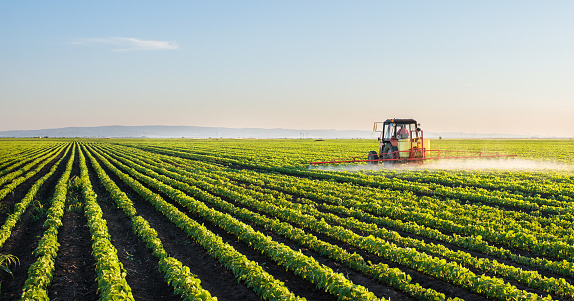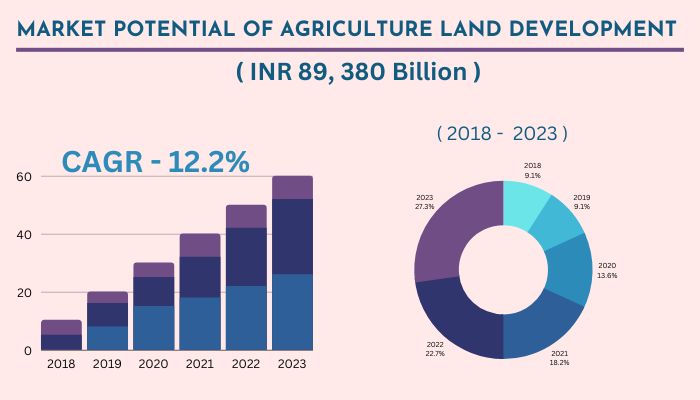Project Report For Agriculture Land Development
Introduction
Agriculture Land Development project report is as follows.
Agricultural land is that on which animal husbandry, Agri products & food for humans are produced. The development of the agricultural sector significantly contributes to the creation of favorable conditions for farmers to produce a strong harvest.
This aids in the eradication of poverty in some nations. These factors are only a few of the reasons why agricultural development is so crucial. Communities are driven by agriculture. The sales from agriculture are a major source of income for many farmers, so it is critical that the surroundings be suitable.
The availability of seeds and the fertility of the soil are frequently insufficient in rural areas to support good farming practices. the technology’s driver The importance of maintaining a robust farming system has caused cutting-edge technologies to concentrate on this industry. Farmers and food scientists have developed methods to boost crop productivity using software and gene editing. This kind of agriculture has assisted in minimizing negative environmental effects while preserving productivity.

The economy of rural or developing areas of the world depends on agriculture. For more than 70% of the people in these areas, the jobs generated by the agricultural industry serve as their primary source of income.
Sample Project Report on Agriculture Land Development
Get Completely Custom Project Report
Market Potential Of Agriculture Land Development
In 2017, the Indian agricultural market was worth INR 44,720 billion. The market’s value is anticipated to grow at a CAGR of 12.2% between 2018 and 2023 to reach INR 89,380 billion.
One of the most effective strategies for reducing extreme poverty, fostering shared prosperity, and feeding the estimated 9.7 billion people by 2050 is agricultural development. Compared to other sectors, the agriculture sector’s growth is two to four times more successful at increasing the incomes of the poorest people. Research from 2016 revealed that 65% of working poor individuals relied on agriculture for their livelihood.
Another important factor in economic growth is agriculture, which in 2018 contributed 4% of the world’s GDP and as much as 25% of GDP in some least developed nations. Over time, it has been apparent that agricultural development practices use up natural resources more quickly than they can be replenished. The “natural” carrying capacity of the land is under strain to meet the demand for food and shelter brought on by the exponential expansion in the human population.

Pollution, degraded soil, declining wildlife populations, and changes to flora and fauna brought on by humans are all signs of natural imbalance.It is reasonable to predict that the agri-ecosystem will face higher demands as a result of the continued growth in the human population. Therefore, technology has played a vital role in agricultural and sustainable development and will continue to do so in the future. With the development of digital technology, the use of technology in farming and agricultural operations has widened.
A change in agricultural techniques is being driven by innovation, which lowers costs and boosts productivity. Farmers are benefiting from this. Continuous progress in agriculture is being driven by the use of digital and analytical tools, and this trend is here to stay.
This has improved crop yields and helped to boost the revenue of the farming community. The Department of Agriculture and Land Use Management, the states in India carry out Land Reforms Programs (DALUM). Programs for land reform are organized and led by the states, with aid from the federal government in the form of loans, advice, and technical support. Other organizations, like the National Bank for Agriculture and Rural Development (NABARD), also contribute money to a number of land redistribution plans.
There are two main parts to the curriculum. The first involves the acquisition of new land and its distribution to agricultural households. The second is offering indigenous households who receive land title deeds loans, inputs, irrigation, and other services. In April 1998, the initiative was introduced during the administration of Atal Bihari Vajpayee. The plan, which also includes Agri-input subsidies and other steps to boost food production and incomes for the rural poor, is part of a larger effort to combat rural poverty and promote rural development.

